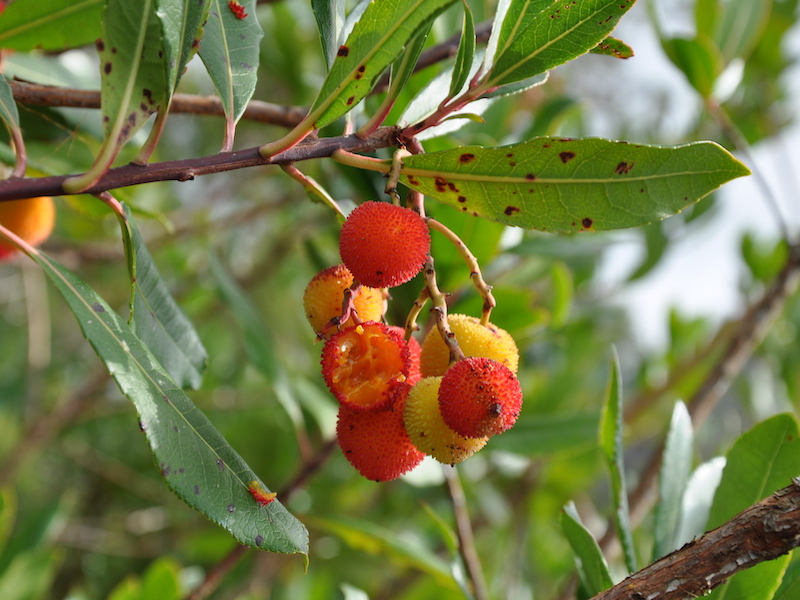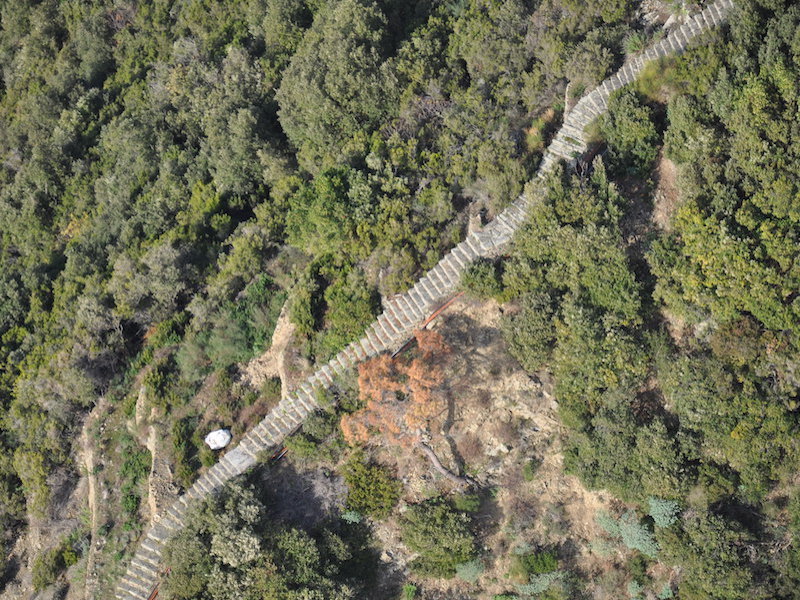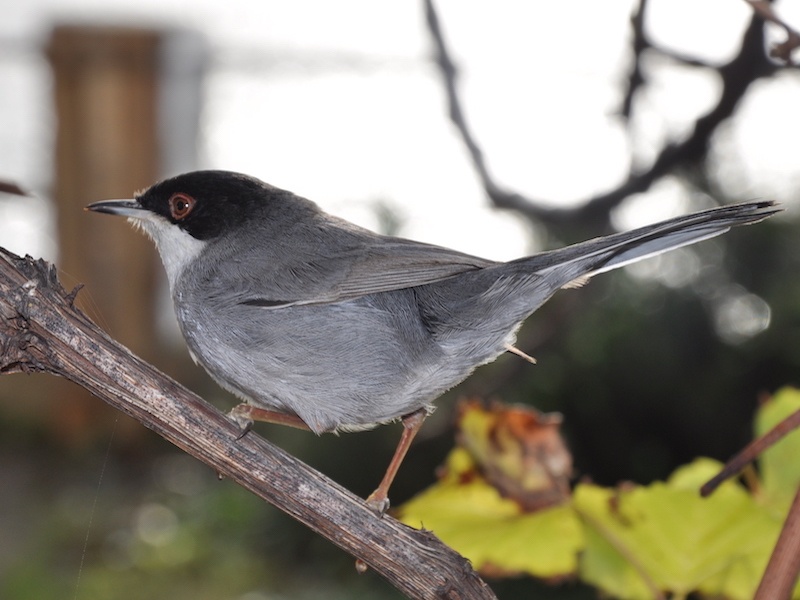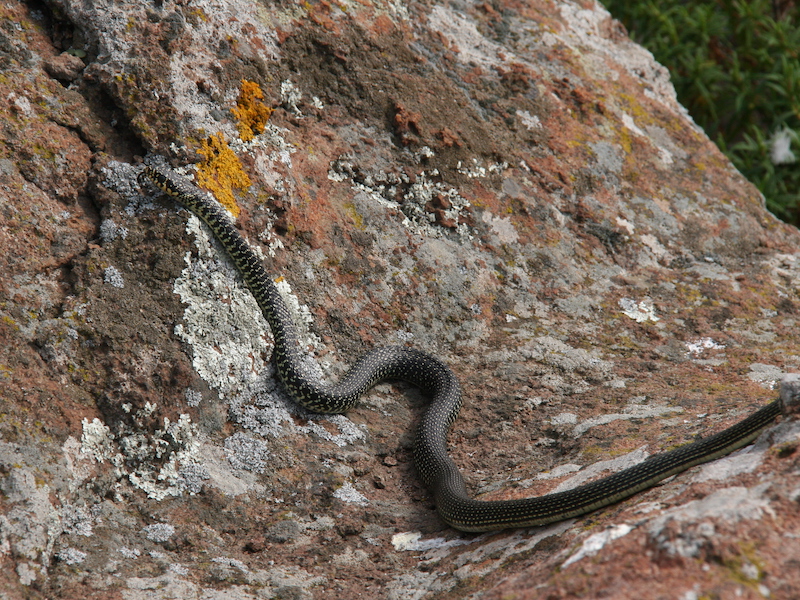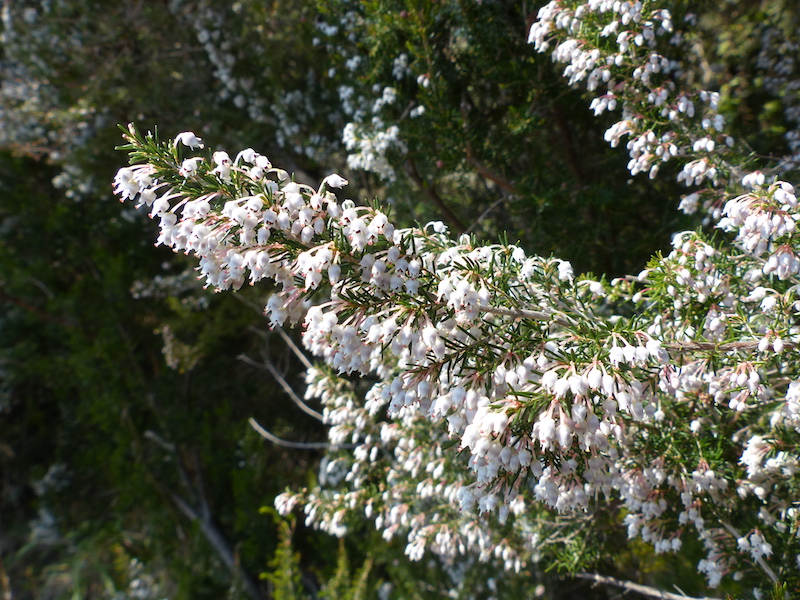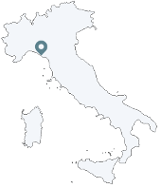The sea-facing mountain slopes, once terraced for agricultural purposes or too steep to be farmed, are covered in spontaneous vegetation, with a prominence of the Mediterranean macchia.
As the name suggests, this type of environment is typical of the Mediterranean coastal area, and consists of thickly growing and mostly evergreen shrubs, that confer intense colouring to the slopes all round the year, and not only when blooming. The species, called sclerophyllous plants, are endowed with biological mechanisms to cope with the heat, aridity, and insolation typical of the coasts: to reduce transpiration they have turned their leaves into thorns, hardened and made their upper surface glossy to reflect light and grown hair on the lower surface to keep the moisture in, shortened their internodes; to save energy they have synchronised their growth cycle with the seasons, so that their quiescence coincides with the summer, while blooming and fruit bearing take place in the cooler and rainier seasons; to counter the aridity of the soil they have strengthened and deepened their roots; to propagate in spite of the adverse environment they sprout new stems from the trunk and disperse countless seeds.
This plant association creates a closed and protected habitat for animals, that throughout the year can use the foliage as shelter, the thorns as defence against predators, and leaves, fruits and small animals as food.
When crossing the Mediterranean macchia on the paths overlooking the sea we can recognise strawberry trees, lentisk, myrtle, heath, brooms, rockroses, and meet the two-tailed pasha, the green lizard, the Sardinian warbler, the green whip snake.
The strawberry tree (Arbutus unedo L.)
The strawberry tree is an evergreen shrub or small tree (up to 8 metres tall) in the family Ericaceae. It has a thick, round, dark green crown on a short, branched out, reddish trunk with thin and scaly bark. Leaves are alternate, simple, short-stalked, serrate, persistent, coriaceous, glossy on the upper surface. The bell-shaped flowers are light-coloured (white-cream-rosy), pendulous, and grouped in bunches called panicles. Its fruits are edible: they are round, orange-to-red berries with grainy skin and a soft yellow pulp, and they ripen in the fall at the same time of blooming. It propagates via seed or, more commonly, by sprouting new basal shoots. The strawberry tree is a thermophilic plant, widespread along the Mediterranean coasts and characterising the macchia, either in homogeneous groups or together with tree heath, myrtle, lentisk, evergreen oak, cork oak.
(See gallery)
The tree heath (Erica arborea L.)
The tree heath is an evergreen shrub or small tree (up to 6 metres tall) in the family Ericaceae. It prefers sunny ground and bears needle-like, entire leaves, with the edge turned to the inside and almost hiding the lower surface to reduce transpiration. Its pollen-rich flowers are pink-white and scented, bell-shaped and tightly grouped at the tip of the branches. The seeds are tiny and plentiful, and are contained in brown capsules that make the plant look dry. The plant propagates via seed or by sprouting new basal shoots. Its wood, known as briar root, is hard, heat-resistant and varied, and is used for making smoking pipes and high-quality finishes. Tree heath is native to the Mediterranean, prefers acid soil in a hot and dry climate where it forms dense woods and, especially together with the strawberry tree, constitutes the macchia.
At Cinque Terre it is easily found on abandoned agricultural land at mid-height on the mountain slopes (between 100 and 500 metres a.s.l.), where it helps protect the soil from erosion and prepares the ground for evergreen oak woods.
(See gallery)
The gorse (Ulex europaeus L.)
The gorse is an evergreen shrub in the family Fabaceae. The shrubs are thick and intricate, 2-3 metres tall. The stems are light-coloured and streaked with green, coated in long thorns and in smaller, clustered ones. The leaves of the young plants turn into spines when the plant is adult. Its scented, yellow and orange flowers have a pea-flower structure and are produced for many months of the year; the fruit is an oval legume 2 centimetres long, dark brown and fuzzy, containing 2 to 8 seeds. This species can be found in Eastern and Western Europe, as well as in the Atlantic climate, on acid or degraded soil where it forms homogeneous patches or is mixed with other species such as strawberry tree and heath tree, making the macchia impenetrable. At Cinque Terre it is to be found on the more humid, mid-to-high coastal slopes.
(See gallery)
The Sardinian warbler (Sylvia melanocephala)
The Sardinian warbler is a passerine bird in the family Sylviidae; it is very easily found in the Mediterranean macchia, where it nests and perpetually moves to control its territory, uttering a distinctive alert song that sounds like a rapidly vibrated wooden instrument. It is a tiny bird, not longer than 13 cm; the male is grey, and its head is black down to well under the eye, which is circled in bright red; the throat is white and the tail, that the bird often bears open, is dark with white outer rectrices. The female is grey and dark brown, with more uniform and less striking colours. It feeds on insects, and on fruit and berries in case of need. It is distributed all over the Mediterranean basin.
The green whip snake (Hierophis viridiflavus)
This is a reptile in the family Colubridae, frequently found in rocky, shrubby areas like the Mediterranean macchia. The background colour is greenish-yellow with heavy dark bands. It can be up to two metres long, its body is slender and the pupils circular. It is a diurnal snake which quickly slithers on rocks and bushes to hunt nestlings, lizards, crickets, other snakes (and also vipers) and rodents. The green whip snake lives on the whole Italian peninsula and islands, in France, on the Pyrenees, in Switzerland and Slovenia.
At Cinque Terre it can be spotted by dry stone walls or ruined buildings, both in the macchia and on agricultural land. (Image)
The two-tailed pasha (Charaxes jasius)
The two-tailed pasha is a butterfly in the family Nymphalidae that can be found where strawberry trees grow, as the larvas exclusively feed on the leaves of this tree. It is a striking butterfly, both because of its size (the wingspan is 7-8 cm) and its colours (the upper portion of the wings is dark and edged with orange, the lower portion is reddish brown, white and orange). The caterpillar is green and a few centimetres long. It reproduces twice a year, in spring and autumn. This butterfly is widespread in the Mediterranean basin and in sub-Saharan Africa, in the Mediterranean macchia habitat with strawberry trees, up to 700-800 metres a.s.l. It feeds by preference on ripe fruit, and it's not uncommon to spot it on bunches of shrivelled grapes. (Image)
Silvia Olivari


